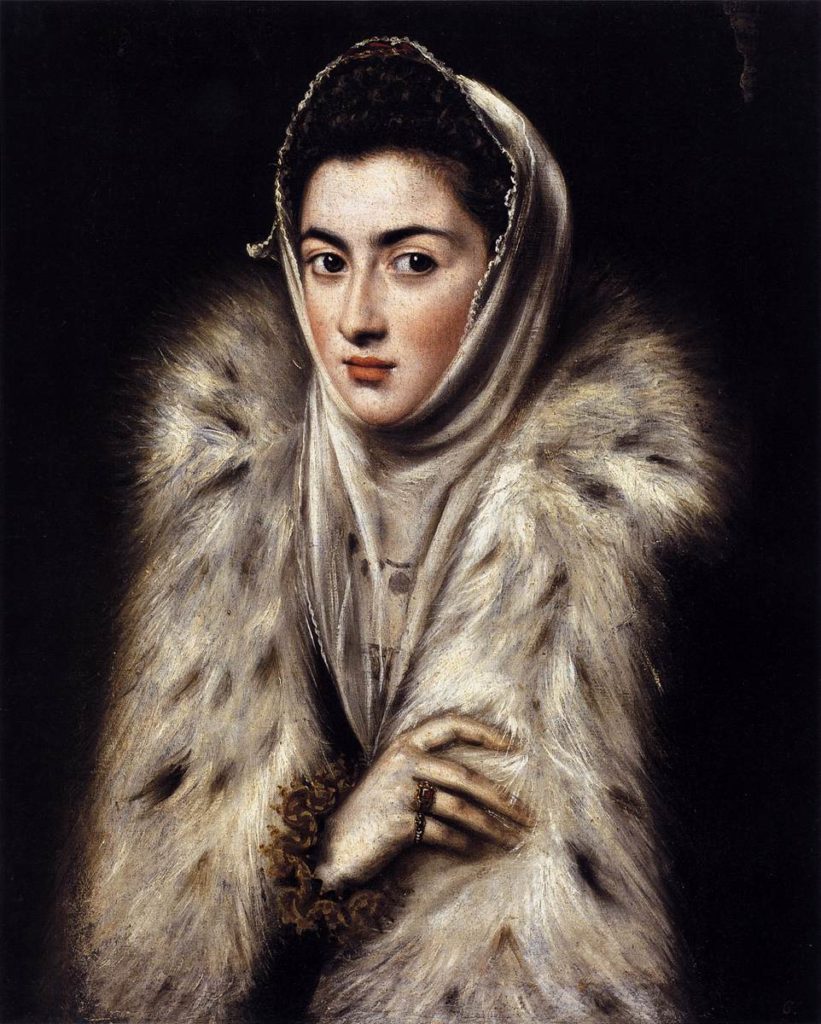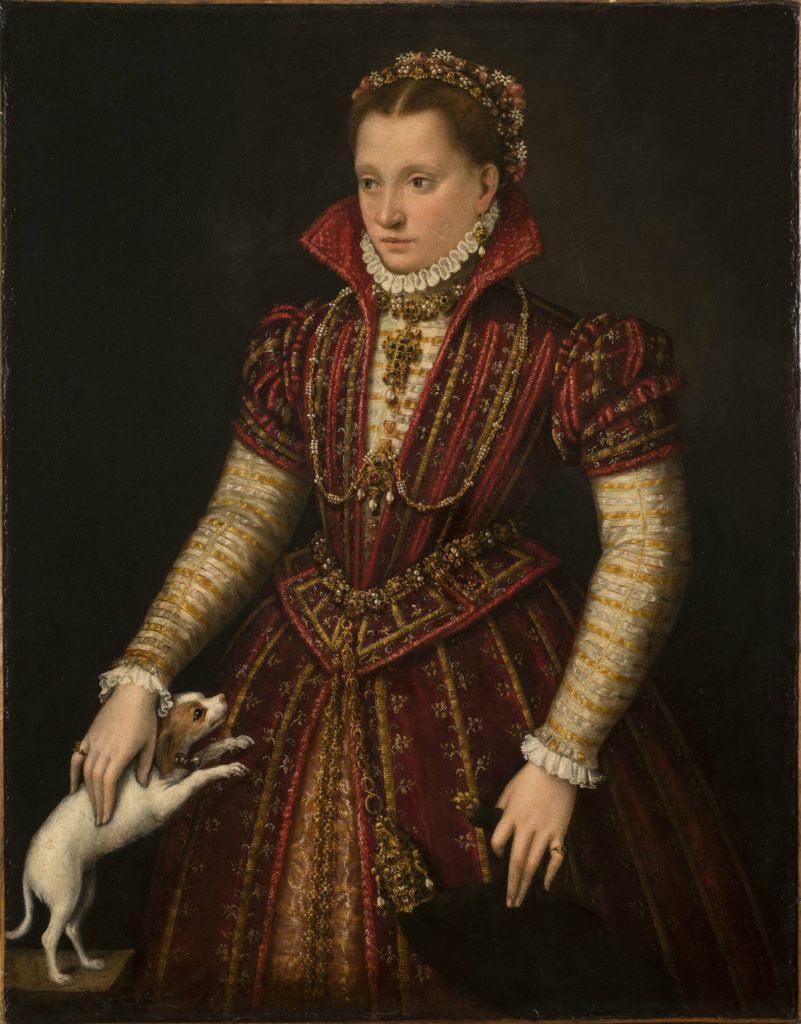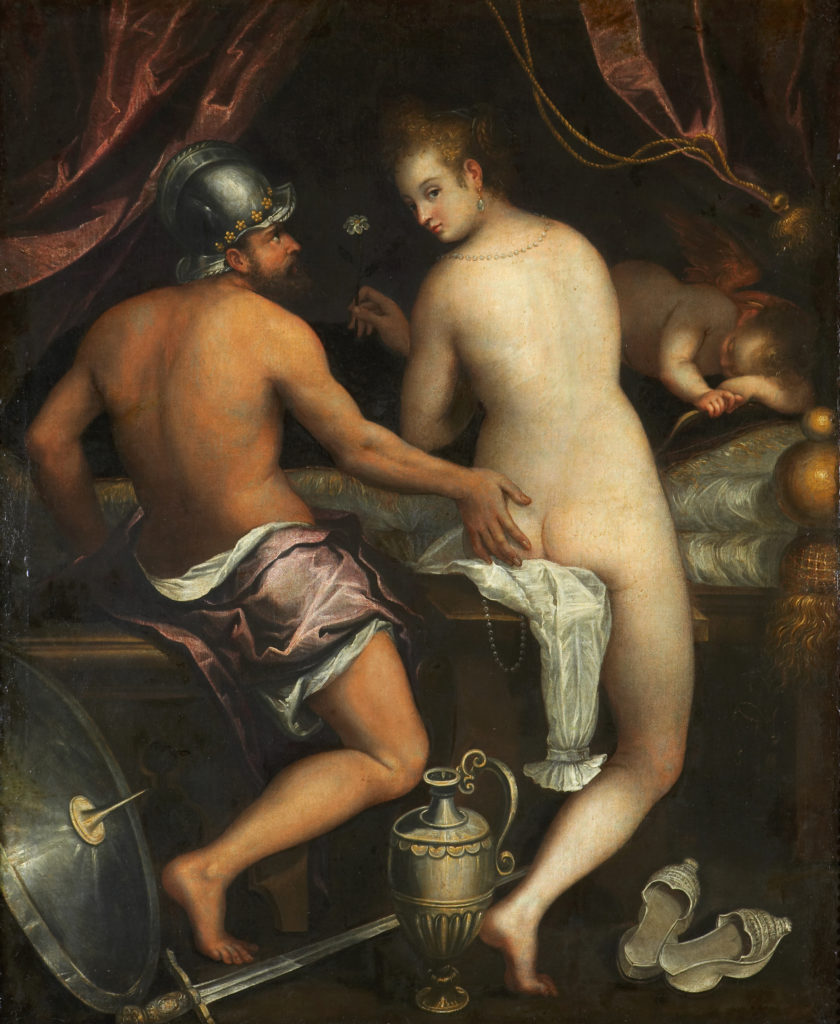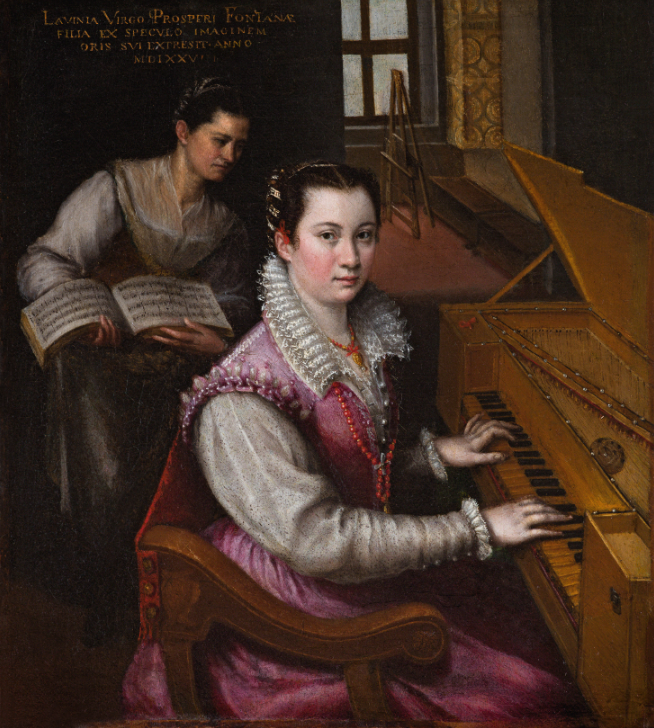On two forgotten portraitists and how to actually alter the art historical cannon.
Ernst Gombrich, likely the most influential art historian of the twentieth century, is ripe for revisiting. His outlook on what constituted important art was white, elite, male, and Eurocentric. In his seminal The Story of Art (1950), which set out to track the entirety of art history, from ancient times to modernity, he included not a single female artist. In one of his final interviews, before he died in 2001, he defended his assessments, implying that, for better or for worse, white, European men with means, from Watteau to Picasso, have been the artistic geniuses throughout history. “Not everyone can do what a genius can,” Gombrich told The Independent, “and not everyone can produce a masterpiece even after long training.”
In a perverse way, Gombrich was right because the problem has always been in the way we define genius. The Artistic Genius is certain of his talents; he is certain of his project. These men were emotionally brutal, sure in their vision, often blustering and quick-to-anger. When Gauguin abandons his family for Tahiti, he does so with confidence that his wife and children will understand that their lives are of minimal importance compared to the vast number of lives he and his art will touch.
By so closely linking the understanding of artistic genius to privileges and traits associated with masculinity, women have forever been locked out of the conversation. “Why have there been no great women artists?” asked Linda Nochland in her 1971 essay. “But like so many other so-called questions involved in the feminist ‘controversy,’ it falsifies the nature of the issue at the same time that it insidiously supplies its own answer: ‘There have been no great women artists because women are incapable of greatness.’” The very notion of genius is gendered, and thus defining it becomes a tautology: The Artistic Genius is male because men are most fit to be Artistic Geniuses. The goalposts of greatness are hyper-specific, socially manipulated, and ultimately less interested in the aesthetics of the work produced. And they are seldom scrutinized.
The first time I saw art by Sofonisba Anguissola, King Philip II of Spain’s court painter, and Lavinia Fontana, arguably the first-ever professional female painter in the West, a number of their works were not attributed to them. Anguissola’s painting “Juana of Austria and a Young Girl” (1561) was long attributed to Titian (it still hangs in the Titian Room at the Isabella Stewart Gardener Museum, according to the museum’s materials). Up until just a few years ago, Anguissola’s “Lady in a Fur Wrap” (1577-79) was—and in many circles still is—attributed to El Greco (art historian Marie Kusche continues to contest it). Fontana had a number of works attributed to Carracci. Detective efforts by Nochland, Marie Kusche, Ann Sutherland Harris, and a few other art historians has since mostly straightened the record. Now, Anguissola and Fontana are at the center of an exhibition called “A Tale of Two Women Painters” at the Prado in Madrid. But these misattributions show the degree to which the legitimacy of an artwork is bound to both a cult of personality and to a specific understanding of gendered greatness. Fontana, for one, had “risen above the usual course of those of her sex, for whom wool and linen are the sole materials appropriate for their fingers and hands,” said the eighteenth-century priest and historian Andrés Ximénez in 1764. But she had not risen so high as to achieve greatness—only female greatness, which was an all-together different qualification.
Yet their artworks, when misattributed to men, suddenly became genius, canonical. Such a mix-up speaks to the common desire to view the qualities of an artwork through the lens of the qualities of the artist. In a recent study, a group of people were shown a series of computer-generated paintings and told that the works were made by either a man or a woman. The participants—but especially men from higher socioeconomic backgrounds, who, not-so-incidentally, are also the most frequent buyers of expensive art and therefore help set their prices and perceived value—rated the randomly generated art said to be created by male artists as more “compelling” and “valuable” than the art said to be created by female artists. “Participants are unable to guess the gender of an artist simply by looking at a painting,” conclude the study’s authors. “Women’s art appears to sell for less because it is made by women.”
But when it comes to defining artistic greatness, the underlying issue is that the history of art has long been centered on the mythos of the artist rather than on the artworks themselves, a fact that almost always works against women. When we begin to question the personal qualities of artists like Picasso or Chuck Close it feels as though we’re questioning our notions of art itself, rather than those specific artists, so bound together is the artwork and the cult of the artist.
Nochland saw this obsession with the artist for what it was. “[It’s] a naive idea that art is the direct, personal expression of individual emotional experience, a translation of personal life into visual terms,” she wrote. “Art is almost never that, great art never is… The language of art is, more materially, embodied in paint and line on canvas or paper, in stone or clay or plastic or metal—it is neither a sob story nor a confidential whisper.”
To overcome the bias towards white male artists requires seismic social shifts, but it also requires a re-angling of how we view art history—as a history of the art, rather than of the artists.
Portraiture presents itself as an extreme example of the centrality of the artist. Although there is subjectivity in all art, portraiture, especially self-portraiture or portraiture of one’s family, is the clearest. Any divergence from reality in the artist’s depiction tends to hold significance. Writes Oscar Wilde: “The sitter is merely the accident, the occasion. It is not he who is revealed by the painter; it is rather the painter who, on the colored canvas, reveals himself.” If most painting is akin to fiction then portraiture is something approaching autofiction, nearly memoir.
For female portraitists, gendered social expectations often come explicitly to bear on what the art “can” and “cannot” be. The photographer Sally Mann, for instance, was heavily criticized after publishing her “Immediate Family” photo series in 1992, for which she took pictures of her young children, Jessie, Virginia, and Emmett, in the nude or in otherwise vulnerable positions on their family farm in Lexington, Virginia. When an essay in The New York Times Magazine entitled “The Disturbing Photography of Sally Mann” ran later that year, the controversy exploded, and Mann was accused of creating child pornography and promoting incest. The response was largely stoked by the expectations of her as a woman and a mother: that she must exist not to document or to invent but instead to protect.
Defending herself from these accusations, Mann tried to disassociate her personal self from herself as a creator of artworks, writing, “The fact is that these are not my children; they are figures on a silvery paper slivered out of time. These are not my children at all; these are children in a photograph.” She added that Wilde “insisted that it is senseless to speak of morality when discussing art, asserting that the hypocritical, prudish and philistine English public, when unable to find the art in a work of art, instead looked for the man in it. But as much as I argued this point, other voices still insisted that the rules were different for a mother.” In her memoir, Hold Still (2015), Mann cited Gaugin, (the anti-Semite) Ezra Pound, and (the misogynist) Hemingway: these men were permitted to make great art, she argued; why must her role as a mother come so intensely to bear on her work? Indeed, why must her personhood and identity have any relevance on her artwork at all?
Fontana, who came of age in the mid-sixteenth century, did not initially stand out as a boundary-pushing woman. She met the gendered expectations of her time as a painter in that she was skilled at depicting jewelry and the intricacies of lace. But the reason she most deserves to be remembered was for her masterful portraiture, particularly her female nudes. Women were generally forbidden from painting nudes, but Fontana circumvented these rules by painting works like “Mars and Venus” (1600-10), in which a god feels up the exposed rear of a goddess, by making it a mythological scene—for which female-painted nudity was more permissible—rather than a historical or Biblical one. Having proven herself within thematically masculine grounds, Fontana’s artistic commissions took off. She created over twenty altar paintings throughout her life, which, given their religious importance, were also generally off-limits to women. Though there were successful women painters like Plautilla Nelli slightly before Fontana’s time, Fontana was the first Western professional female portraitist working in mainstream society, as opposed to in a convent or other religious context. Fontana also proved to be an outlier in her educational and domestic life, getting a doctorate from the University of Bologna and financially supporting her family while her husband mostly raised their children.
It is tempting, however, to fall into the trap of praising Fontana for forging a path outside of society’s expectations. In the context of the sixteenth century, her life was exceptional and noteworthy, yes. But the reason she should be considered important, from the perspective of a new kind of art history, is not for who she was but because of what she accomplished on the canvas.
Anguissola, on the other hand, was an Italian noblewoman and never made money off of her art—work-for-pay was considered unbecoming for a woman of her social stature. She had perhaps the most rigorous artistic training of any woman of the sixteenth century: she apprenticed with two painters and by her twenties, had drawn the attention of Giorgio Vasari and Michelangelo, who recognized her talents at a young age. She became King Philip II of Spain’s de facto court portraitist, although Philip II, not wanting his judgment to be questioned in hiring a woman as his portrait painter, officially appointed Anguissola as the lady-in-waiting to his third wife, Elisabeth of Valois. Like Fontana, the bar Anguissola had to clear in order to become successful as an artist—to become the king’s portraitist—was incredibly high due to her gender. Her contemporaries described her as virtuous; an exceptional conversationalist, musician, and dancer; and she was beloved by both the Spanish and Italian nobilities. When Anguissola was 92, a young Anthony van Dyck spoke with her at length while painting her portrait, later claiming that she was the most brilliant artist he had ever met.
But again, it is what Anguissola painted that most deserves our attention: In “Portrait of the Artist’s Sisters Playing Chess” (1555), she depicts the intellectual potential of three young girls as they play chess together. Elena, Anguissola’s younger sister, looks out at the viewer, having just defeated her sister, Minerva, while the other sister, Europa, looks on proudly at Elena. Anguissola details the girls’ aristocratic clothes—their ruffled lace collars, the braids around their heads—as well as the way they lean over the table and the chessboard. Had Anguissola’s art been placed within the art historical cannon, this painting would likely be seen as a lead-in to much of Caravaggio’s work—the girls’ limbs and the table’s corners pushing out of the frame, nearly infringing on the audience’s space. The painting is foremostly about the intellectual potential of these girls. Even their names hold Roman mythological overtones, raising them up as near-goddesses.
Through the lens of contemporary criticism, what seems most salient about Fontana and Anguissola is that they broke through the sexist mores of their time to become two of the most significant portraitists in history. But even more impressive—and this is an argument against both modern ways of doing criticism and of doing art history—is the way in which their work fits neatly into the art historical cannon as vital precursors of the likes of Caravaggio, Jacob van Loo, even Rembrandt (in the way that Fontana lights and frames a hand on a rear, in the way that Anguissola collapses psychological space and time at the chessboard).
Women or not, their omission from art history is glaring. And yet it is not enough to simply plug them in to the art historical cannon and carry on. The history of art is generally presented as a straight line (e.g., Giotto leads to Matisse leads to Rothko). In order to maintain the line, underlying assumptions of what is worthy of the cannon must also therefore be maintained. To engage in any kind of historical revisionism—to highlight new, non-Gombrich-approved artists, for instance—is to briefly interrupt the flow, but the line eventually reverts to its original formulation because the popular understanding of what constitutes greatness hasn’t changed.
Even respectable attempts to include more women in galleries and museums make little lasting difference when the notion of genius itself is not also changed. Although there has been a sharp increase in museum and gallery exhibitions highlighting women—in Los Angeles in 2018, for instance, there were more solo exhibitions for female artists than male—the market remains skewed towards men. In 2018, male artists created 95 percent of the total value of art sold at major auction houses across the world. And from 2008 to 2018, only 11 percent of the artworks actually bought by major American museums were by women. The art world can posture, but, where it counts, less is changing than it might seem because the underlying idea of the Artistic Genius maintains its hold.
In our dilapidating world, there are few comforting narratives, and it’s a pleasant notion to think that there are near-deities of creative wisdom, a select few of these Artistic Geniuses who have access to the highest realms of art, a kind of superior humanity—souls in secular times. That this myth has been placed onto the most cantankerous, people-hating men makes sense: they flout the rules, they place themselves above everyone else. We let them stay there—we let the myth of the Artistic Genius prevail—because their place in the collective imagination provides hope for the rest of us that at least someone has answers, at least someone is living a more rarefied human experience.
But so long as we continue to play along with this myth, the course of art history won’t be shifted; revisions we make won’t stick. Even Gombrich might have been onto this in his own way. “The question of whether Michelangelo was a man or a woman really doesn’t interest me,” Gombrich said in 1991. “Historians have to take things as they are and as they were.” Historical emphasis must be returned to the art rather than the artist. The gods of art are blind to the hands through which they move, and a pair of portraitists need not have been blustering or brutal or male in order to have created work that shifted the course of history.
Cody Delistraty is a writer and critic in Paris and New York.
from The Paris Review https://ift.tt/39SDKRW






Comments
Post a Comment